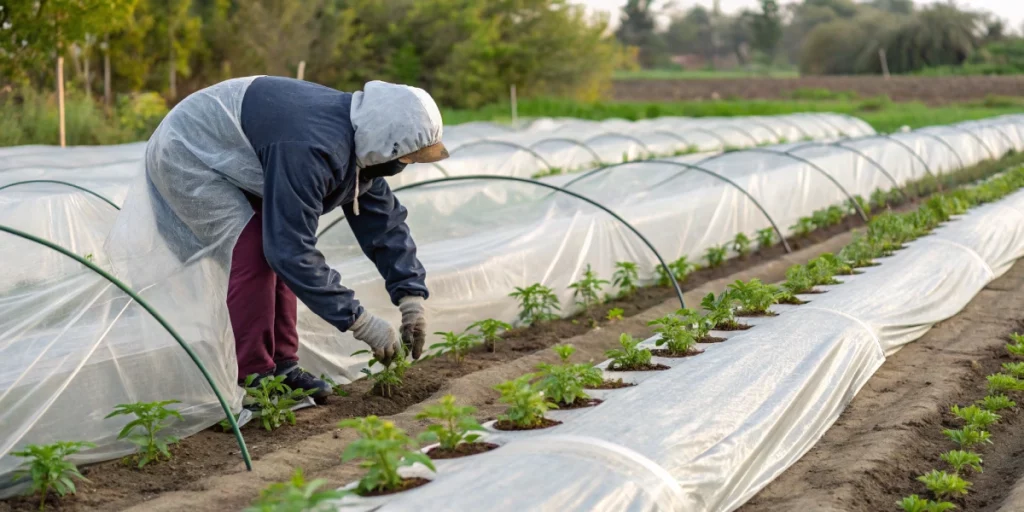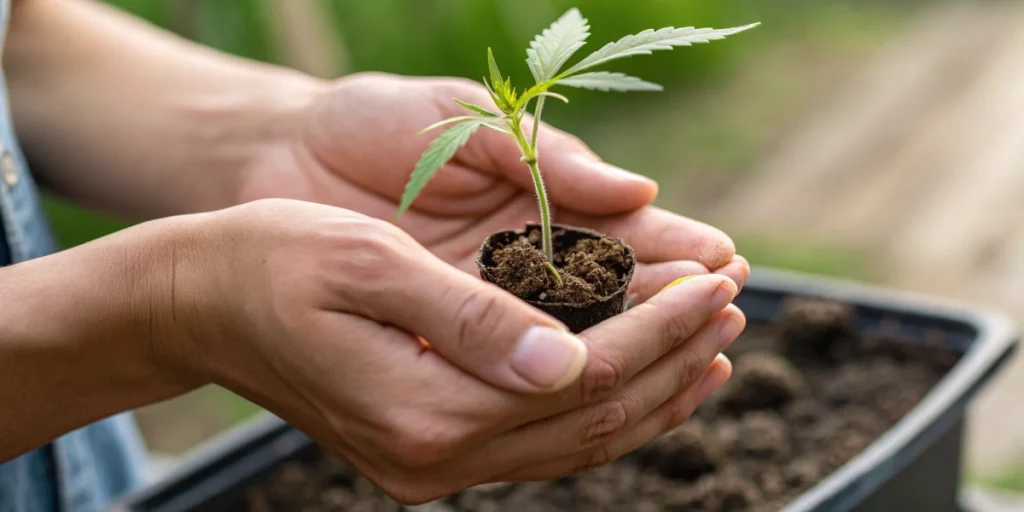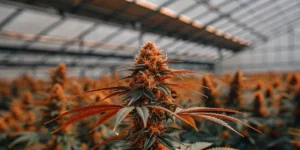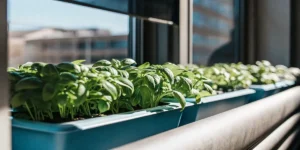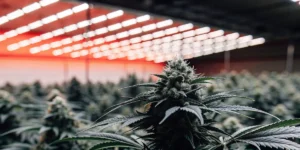Factors Influencing Planting Time
Frost dates
Frost dates define the first and last day when freezing temperatures hit a region. Growers rely on local data to avoid seed damage. Hard frost can kill germinating cannabis seedlings. Therefore, knowing the last spring frost date prevents losses. Most agriculture websites list average dates by zone. Gardeners can access records from extension services. Checking charts helps plan planting. Moreover, frost dates vary yearly. Gardeners should update info each season to keep seedlings safe and healthy. Always build a buffer of ten days after the average last frost to protect tender sprouts.
To track frost dates, gardeners use official weather stations and historical records. Many apps send freeze alerts via email or text. Hobby growers also note frost events in their own yard. Recording local lows builds a personalized frost calendar. Additionally, microclimates impact frost timing near bodies of water or hillsides. Urban heat islands can extend frost-free periods. Therefore, compare national data with on-site observations. Then adjust planting accordingly. This local insight helps plan ideal sowing windows and protect young plants.
Temperature ranges
Cannabis thrives when soil and air temperatures fall between 20 °C and 30 °C. Seeds germinate best in warm, moist conditions. If nights dip below 10 °C, seedlings slow growth and may stall. Conversely, daytime highs above 35 °C can stress young plants. Therefore, growers monitor local highs and lows for a two-week window around planting. Such tracking ensures soil warms adequately and air stays within safe limits. Moreover, consistent warmth speeds root development and supports robust sprouting.
To measure local temperature ranges, use a digital thermometer buried at seed depth. Compare readings with outdoor air sensors. Additionally, note daily swings: large gaps between day and night can shock seedlings. In such climates, start seeds indoors under controlled heat or use protective cloches outdoors. Then move seedlings when nights stay above 12 °C. This approach reduces stress. Next, maintain a daily log of temperature trends to refine planting schedules over time.
Daylight hours
Seedlings need at least 14 hours of light per day to grow vigorously. Photoperiod affects how quickly a seedling will develop true leaves. In spring, increasing daylight signals plants to switch from juvenile to growth stages. Therefore, consider sunrise and sunset times when choosing your planting date. Most growers start seeds indoors before natural light suffices. Additionally, outdoor sowing works best once day length stabilizes above 12 hours.
To check daylight hours, use a simple sunrise/sunset app or online calendar. Compare required hours with local day length projections. If natural light falls short, supplement with grow lights for indoor seedlings. Once daylight exceeds the minimum, harden off plants outside. This transition prepares seedlings for full sun exposure. Moreover, tracking day length over several weeks helps anticipate shifts in photoperiod and refine future sowing dates.
Indoor vs. Outdoor Sowing
Starting under lights
Indoor germination offers precise control over heat, humidity, and lighting. Growers use fluorescent or LED lights set on timers to deliver 18 hours of daily light. They place seeds in moist media at 21 °C to kickstart sprouting. Moreover, trays with humidity domes maintain moisture levels. As soon as seedlings appear, growers raise lights to prevent legginess. Active monitoring of moisture and temperature ensures healthy root development. This environment yields sturdy plants ready for transplant.
Indoor setups also allow growers to start seeds weeks before outdoor conditions turn favorable. They maintain a stable climate year-round, avoiding temperature swings and wild weather. Additionally, growers can germinate multiple strains simultaneously. Then they compare vigor and choose top performers for outdoor transfer. This selective approach streamlines space and boosts overall yield. Finally, once outdoor conditions match indoor settings, growers move seedlings for further growth under natural light.
Hardening off seedlings
Hardening off introduces indoor seedlings to outdoor stresses gradually. Growers move young plants outside for a few hours each day. They start in shaded spots and then increase sun exposure by one hour daily. This process strengthens cell walls and builds resistance to wind and UV. Moreover, growers bring plants indoors overnight to avoid frost or cold snaps. After a week, seedlings handle full sun and variable conditions.
During hardening off, monitor soil moisture closely. Outdoor air and wind dry media faster than indoor trays. Therefore, check pots twice daily and water lightly when needed. Also watch for wilting or leaf curl as signs of stress. If seedlings droop, reduce exposure or mist leaves until they recover. This gentle ramp-up prepares plants for direct sowing without shock or growth delays.
Direct sow benefits
Sowing seeds directly into final containers or garden beds reduces transplant shock. Seeds germinate where they will mature, developing root systems unimpeded by pot boundaries. Moreover, direct sow eliminates the need for hardening off and extra handling. In regions with stable spring climates, this approach streamlines labor and time. Growers plant when soil warms consistently above 18 °C. Then they water lightly and mulch to conserve moisture.
Direct sow also helps maintain genetic integrity. Some strains resist transplant stress poorly, so direct placement boosts uniformity. Additionally, direct seed reduces risk of root disturbance and disease transfer in re-pots. Gardeners can space seeds at final density immediately, optimizing light exposure and airflow. This method saves nursery space indoors and allows fields to fill quickly with healthy, vigorous plants.
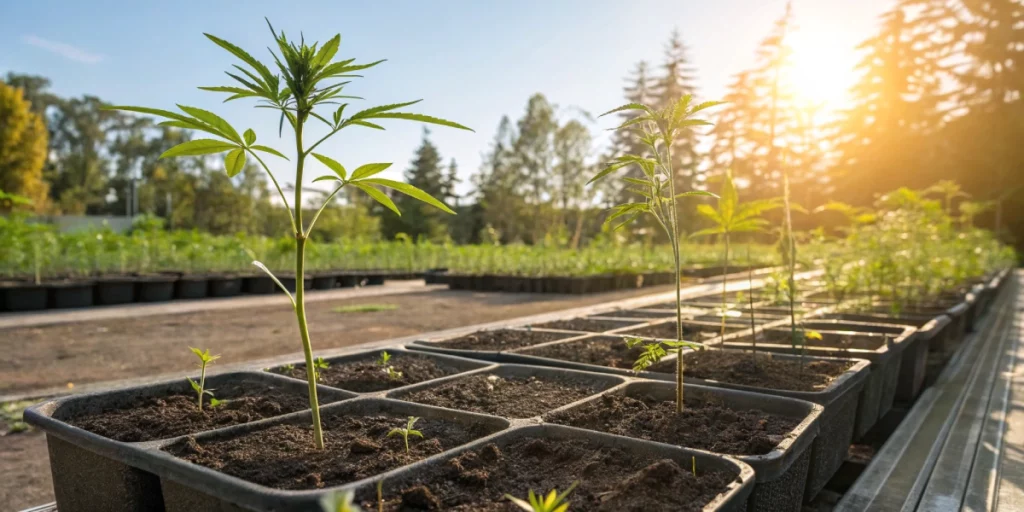
Regional Planting Calendars
Northern climates
In northern regions, short springs and cool soils limit the planting window. Growers typically wait until late May or early June, after the last frost. They may start seeds indoors in April under grow lights. This head start yields seedlings ready for outdoor beds by early June. Daytime temperatures then approach 20 °C. Humidity remains moderate, reducing disease risk.
Gardeners in these climates also use row covers to extend the season. Covers trap heat and shield young plants from cold nights. Additionally, mulching with black plastic warms soil faster. Growers, especially those cultivating Jamaican Dream Autoflower, check long-range forecasts for late cold snaps before sowing. Once daily lows remain above 10 °C, they remove covers and let plants acclimate to open air.
Temperate zones
Temperate zones provide a broader window for seed sowing. In many areas, growers can plant in mid-April to early May. Soil temps rise above 15 °C by day, and nights stay around 10 °C. Therefore, outdoor sowing works well if rain falls regularly. Supplementing with row covers during cold spells ensures consistent growth.
Temperate growers may choose either direct sow or indoor starting. They monitor soil moisture and pH to optimize germination. Additionally, spacing and soil preparation impact airflow and disease resistance. By late spring, seedlings benefit from longer days and steady warmth. Many growers find that transplanting at four-leaf stage yields robust plants that finish before autumn frosts.
Tropical areas
Tropical climates boast year-round warmth and high humidity. Growers can plant seeds almost any month, except during heavy rains or cyclones. Soil temperatures rarely dip below 20 °C, favoring rapid germination. However, intense sun may scorch seedlings if direct sow. Therefore, many start seeds under shade cloth before moving to open fields.
In the wet season, excess rain can drown seeds or spread root disease. Tropical growers schedule planting at the onset of dry spells. They also install raised beds to improve drainage. Moreover, planting in slightly elevated plots reduces standing water. With these tactics, they avoid fungal issues and encourage strong early root growth.
Signs Your Seed Is Ready for Soil
Root tap emergence
The first sign of a viable seed is a white root tap breaking through the shell. This tiny root shows that the embryo has activated and absorbed moisture. Growers look for a root around 2 mm long before planting. They handle sprouted seeds gently to avoid damage. Clear containers help monitor progress.
Once the tap appears, planting in soil or media should occur within 24 hours. Delaying longer can turn the root yellow or brittle. Growers prepare a small hole and place the seed tap-down. Then they cover gently and mist lightly. This careful timing ensures the root directs downward into the soil.
Seed shell detachment
As roots grow, the seed coat loosens and detaches. Seedlings shed shells once they produce cotyledons. This process indicates the plant has enough stored energy to start photosynthesis. Growers know that loose shells left on leaves can hinder leaf expansion. Therefore, they gently brush off remnants.
Shell detachment also marks readiness for deeper planting. At this point, seedlings tolerate slightly drier conditions. Growers transplant into soil that already offers nutrients and microbes. This timing helps roots branch out quickly. Moreover, seedlings absorb light and air more efficiently without shell barriers.
Seedling vigor
Strong seedlings display bright green cotyledons and upright stems. They grow at least 1 cm per day under favorable conditions. Vigorous growth signals healthy roots and proper hydration. Growers pinch the tops slightly to encourage bushier growth once the first true leaves appear.
If seedlings appear weak or leggy, growers adjust light intensity or temperature. They avoid overcrowding trays and ensure good airflow. Additionally, they may use gentle fertilization when true leaves form. Healthy seedlings transplant more easily and establish quickly in soil or pots.
Adjusting for Climate Change Variability
Unpredictable frosts
Extreme weather makes frost dates hard to predict. Growers monitor extended forecasts for sudden cold snaps in spring. They keep frost cloth on standby. Moreover, installing frost sensors in the field triggers timely cover placement, protecting young plants from surprise freezes.
Some gardeners delay planting until consecutive warm nights appear. Others invest in portable heaters or wind machines that limit frost formation. By reacting to data rather than set calendar dates, growers reduce risk. This flexible approach pays off when seasons start oddly cold or extend late into spring.
Heat waves
Rising temperatures can scorch seedlings and wilt young plants quickly. Growers watch for heat warnings around planting time. They may delay sowing until heat peaks subside. Additionally, they irrigate deeply before heat waves arrive to buffer soil moisture.
Shade cloth provides relief during extreme sun, and misting systems lower ambient temperatures. Growers also mulch to keep roots cool. Choosing planting dates a bit later in the season can help avoid the worst heat waves and safeguard plant health.
Rainfall patterns
Unusual rainfall can flood beds or leave soils bone dry. Growers track seasonal rainfall using local weather apps and gauge data. In periods of heavy rain, they raise planting beds and add drainage channels. When drought looms, they schedule planting just before forecast rainy days.
They also rotate crops and install drip irrigation to deliver consistent moisture. This balance prevents seed rot and encourages steady root growth. By syncing sowing to reliable rain windows, growers overcome erratic showers and sustain uniform germination.
FAQs about when to plant cannabis seed
What’s the last safe planting date?
The last safe planting date depends on your local frost calendar. Aim to sow seeds two weeks before the average last frost to give seedlings a head start. In cooler areas, this date falls in late May or early June. In temperate zones, mid-April works. Always confirm with up-to-date frost records to avoid surprise freezes and ensure plants mature before autumn.
How do I track local frost dates?
You can track local frost dates using official weather station websites or agricultural extension services. Many free apps provide historical frost data and alerts for upcoming freezes. Gardeners also record their own yard’s low temperatures. Combining national data with personal logs gives the most reliable picture and helps you set the right planting window each season.
Can I plant earlier with greenhouse support?
Yes, greenhouses extend the growing window by trapping heat and protecting seedlings from wind and frost. You can sow seeds up to a month before outdoor planting dates. Maintain ventilation to avoid overheating. Additionally, ensure benches and soil inside the greenhouse stay warm and moist. Then harden off seedlings by opening doors gradually before transplanting outside.
